|
Following the Allied breakout from Normandy in August 1944, the Allies swiftly moved north and east into northern France, Belgium and the Netherlands. The Belgian port of Antwerp was liberated by the British Second Army on 4 September, 1944 and became a target for German V-weapons in early October, 1944. In November, Supreme Headquarters Allied Expeditionary Force (SHAEF) requested assistance from the Department of Home Security with dealing with the aftermath of incidents caused by the V-weapons in Antwerp. In early December 1944 it was announced that special “No. 1 Overseas Column”, made up of Civil Defence volunteers, would be sent to Antwerp to assist the Belgian authorities and Pioneer Corps there. 224 volunteers were drawn from the Regional Columns of the Civil Defence Reserve, including 20 vehicles, mobile workshops, canteen, motorcycles and rescue equipment. The column had veterans of the air raids on London, Manchester, Liverpool, Plymouth and Glasgow amongst its ranks. The column included heavy rescue, first aid, decontamination and incident control. They were to wear a new shoulder title “C.D.R. Overseas Column” on their dark blue battledress. Although under military control they were not members of the armed services and were not armed.
The column, commanded by Charles Newman CBE, was organised at Sutton Park, north of Birmingham, and left for Europe on Christmas Day 1944. They stayed at a transit camp until 27 December and then onboarded their vehicles on an LST for the sailing to Belgium on 28 December. However, poor weather meant they anchored in port until 30 December. They finally reached Belgium on New Year’s Day 1945. They travelled to their headquarters in Antwerp and reported to 21st Army Group on 5 January as ready for action. On 16 January, 1945, the Overseas Column suffered its first casualty. Following the explosion of a V2 missile, 44-year-old Group Sergeant Thomas James Parkinson (formally a member of a Manchester Rescue Squad) entered through debris to assist people trapped inside. A wall collapsed and although pulled out by fellow CD members he died. Party Leader Mahaffy was injured in this incident but later recovered. Parkinson is buried in Schoonselhof Cemetery. Sources quote 18 February as the day Parkinson died and this appears on his headstone and in press cuttings from the time. Parkinson received a posthumous King's Commendation for Brave Conduct which was gazetted in September 1945. Between January and March 1945, 427 V1s and 256 V2s landed in the greater Antwerp area. The Overseas Column attended 44 incidents caused by V-weapons. The city featured buildings with deep basements that had not been reinforced. When struck by V-weapons this basements often filled with debris making the task of the Overseas Column exceedingly difficult. In some areas of the port they also had to contend with the presence of moats and waterways hampering rescue attempts. The Overseas Column also trained the local P.L.B. (Passieve Luchtbescherming - Passive Air Defence) and police in dealing with incidents. Attached to the column was Don Dallas as Liaison Officer. He was an experienced member of a rescue squad and also a journalist. He had written for many magazines on ARP and Civil Defence matters since the start of the war. He volunteered his services for the Overseas Column and his position was discussed in papers because he was a conscientious objector. However, he was sent with the column to Belgium and wrote a number of articles on the performance of the column in Antwerp. With the end of hostilities in Europe on 8 May, 1945 the Overseas Column was stood down. A thank you parade on 14 May, 1945 was organised by Camille Huysmans, the major of Antwerp, to thank members of the Civil Defence Reserve - No.1 Overseas Column for their assistance. Apart from the files held by the National Archives, there appears to be very limited information or photos of the Overseas Column in Antwerp. This article would not have been possible without the assistance of Chris Ransted. The group photo is courtesy the Bunker & Airplane Archeo Antwerp website.
0 Comments
With the threat of a European war growing in the late 1930s, the government created a recruitment campaign for the various ARP services including the Women's Voluntary Service. One of these posters – ARP Looks To You – of which some 50,000 were printed, featured Barbara Kershaw. Originally from Brighouse, she was working as a model in London, aged 25. I came across a source that says she replaced the original model chosen as that person was of German extraction…
The poster was entered into a competition and won first prize for the 19-year-old artist. A photo of Stella Reading congratulating the artist can be found in the Getty Photo Archive. It appears that the original model used on the competition entry was replaced by Kershaw for the poster that was used publicly. Willem ter Braak - real name Engelbertus Fukken – was a Dutch-born German Abwehr agent who spent several months spying in England during World War Two. It is currently thought he spent the longest time as an undetected German spy in Britain during the war (between November 1940 and March 1941).
Ter Braak had been an early member of the Dutch National Socialist Movement (NSB) and was recruited by the Abwehr after the fall of the Netherlands in the summer of 1940. He was parachuted into England on the night of 2/3 November 1940 near Haversham in Buckinghamshire. His parachute was found but searches for the parachutist failed to locate him. He travelled to Cambridge and took lodging in St. Barnabas Road, Cambridge. Though he claimed to work for the Free Dutch forces he should have registered with the police and his landlord did report his presence to the authorities. However, it seems no action was taken to verify ter Braak’s identity. He carried with him a radio transmitter, false identification documents and amounts of sterling and US dollars. What exactly Ter Braak reported on back to his German handlers is unknown but it is thought his transmitter batteries were running down by Christmas 1940 and some sources speculate he was sending letters via Spain to his handlers. At the end of March 1941, with his cache of money running out and with suspicions about his ration and ID documents, Ter Braak deposited his radio transmitter (hidden in a leather suitcase) at the left luggage office at Cambridge railway station. He then broke into an air raid shelter. Ter Braak’s body was found by an electrician in the air raid shelter in Christ's Pieces Park on 1 April, 1941, Cambridge. It is assumed he committed suicide using his own pistol on the night of March 30/31. He was buried in an unmarked grave in a cemetery in Great Shelford. His family later requested a headstone for his grave, in his birth name. Ter Braak/Fukken was 26 when he died. Documents relating to his case were released by the National Archives in 1999. A great group portrait of civil defence wardens belonging to Key Post P6. Sadly there is no further information available on the location of this photo. Going by the maximum number of war service chevrons on show I imagine this is a stand-down photo just after the war finished in May 1945.
Standard battledress and trousers for the men and tunic and skirts for the ladies. As for most wardens there is just the most basic of insignia (apart from the junior supervisory chevrons) on show - just the CD breast badge and warden shoulder titles. One chap at the front has leather gaiters on. I am once again indebted to Steve Taylor for sharing these photos below. I recently posted a blog about an oval B.R.O. patch. Steve's battledress with Cornwall area title shows this Bomb Reconnaissance Officer (BRO) badge being worn along with an "I.W." which is assumed to be Incident Warden (a very early naming of the Incident Officer as it was to become, the script version of this worn above). The person also has a first world war wound stripe in red.
|
Please support this website's running costs and keep it advert free
Categories
All
Archives
June 2024
|
|
|
Copyright © 2018–2024
|
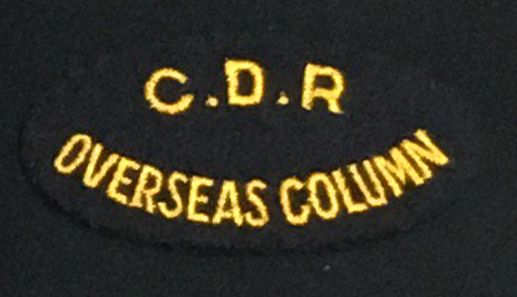
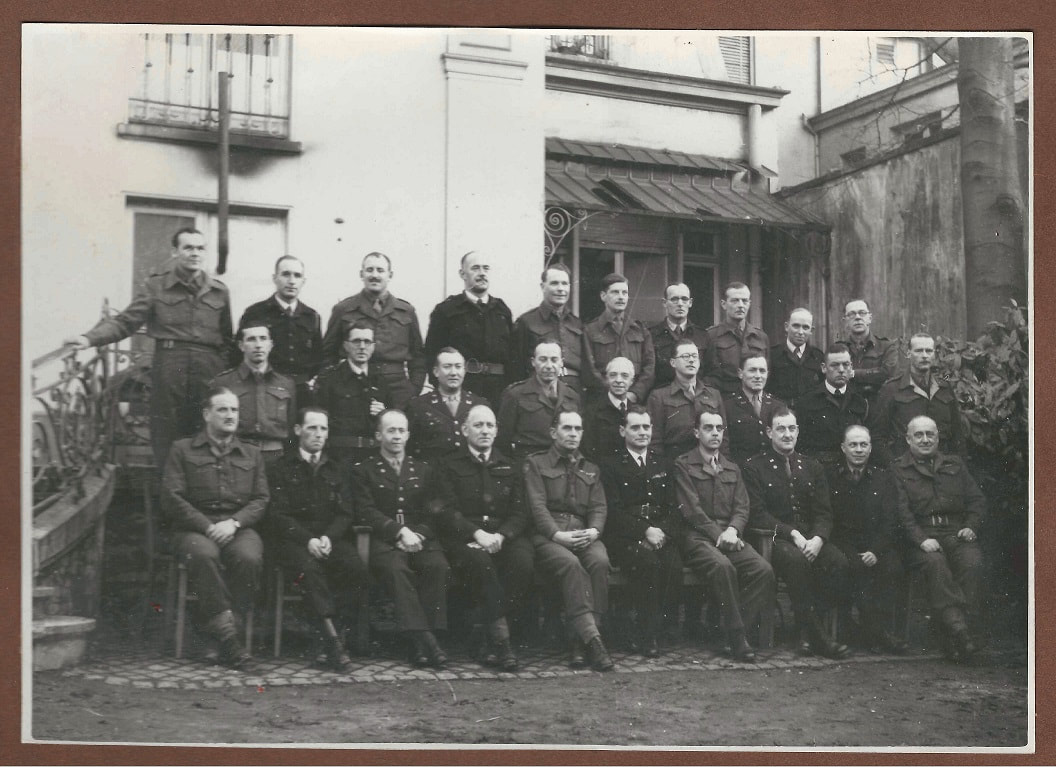
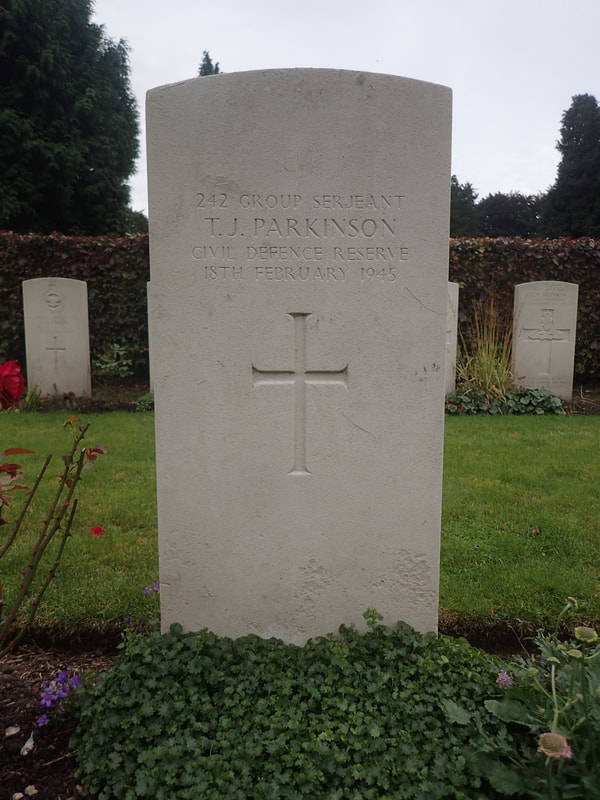
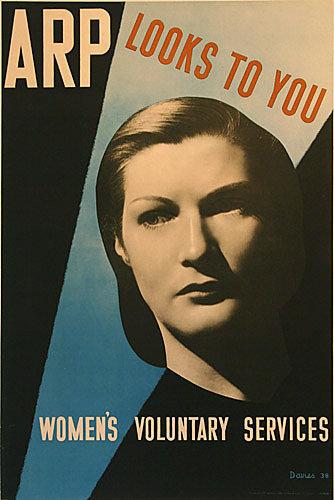
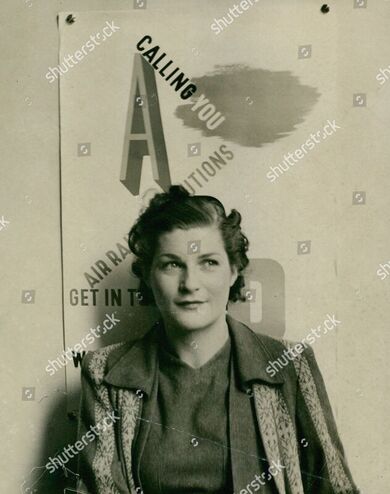
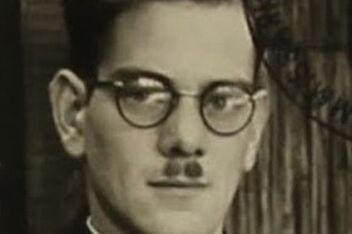
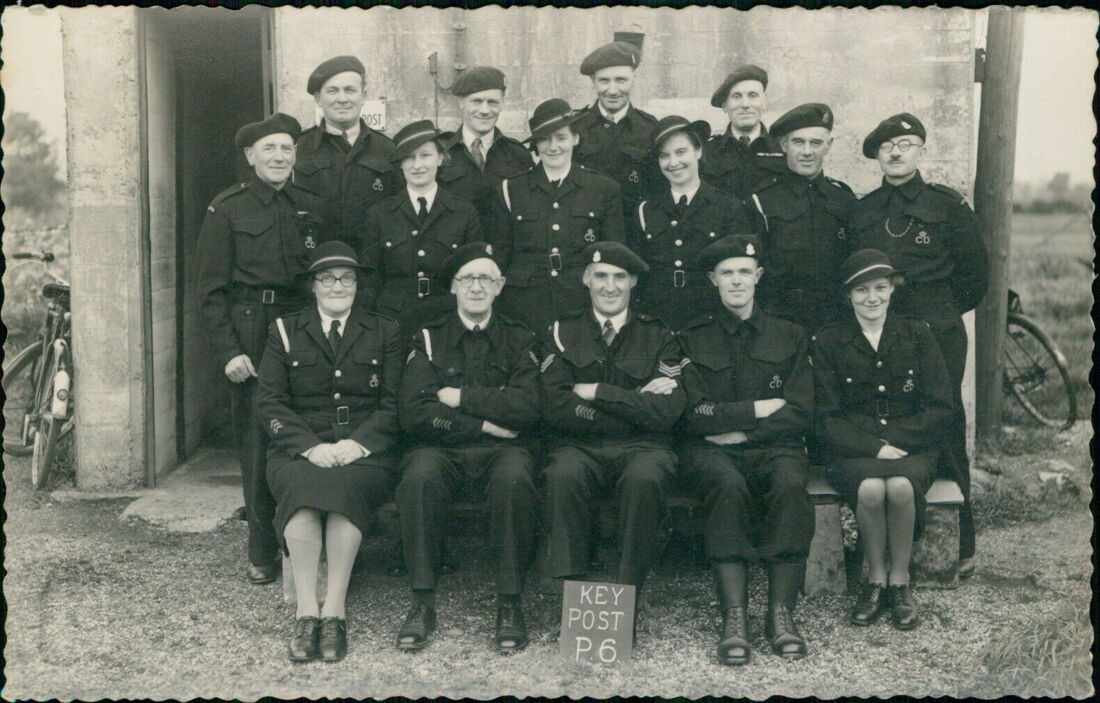
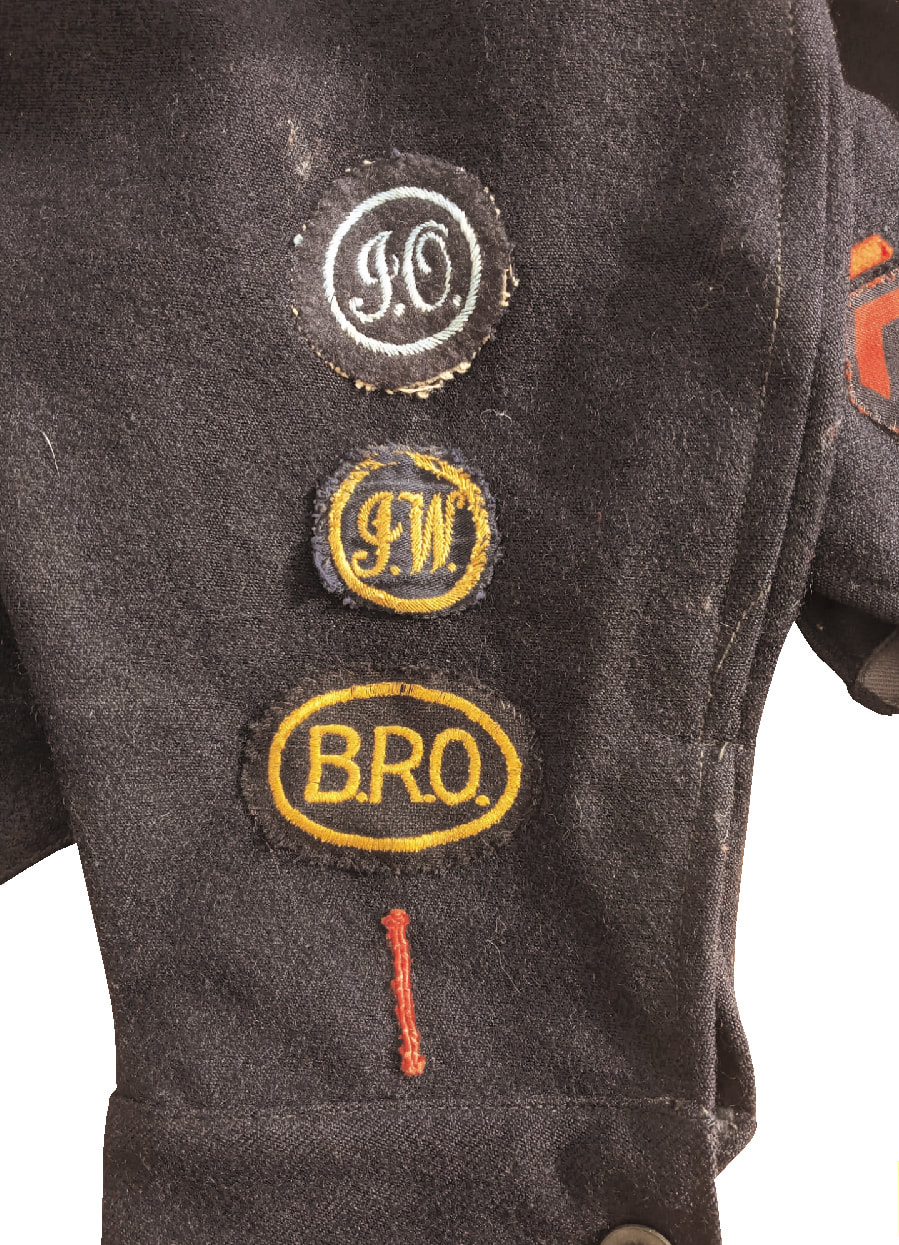
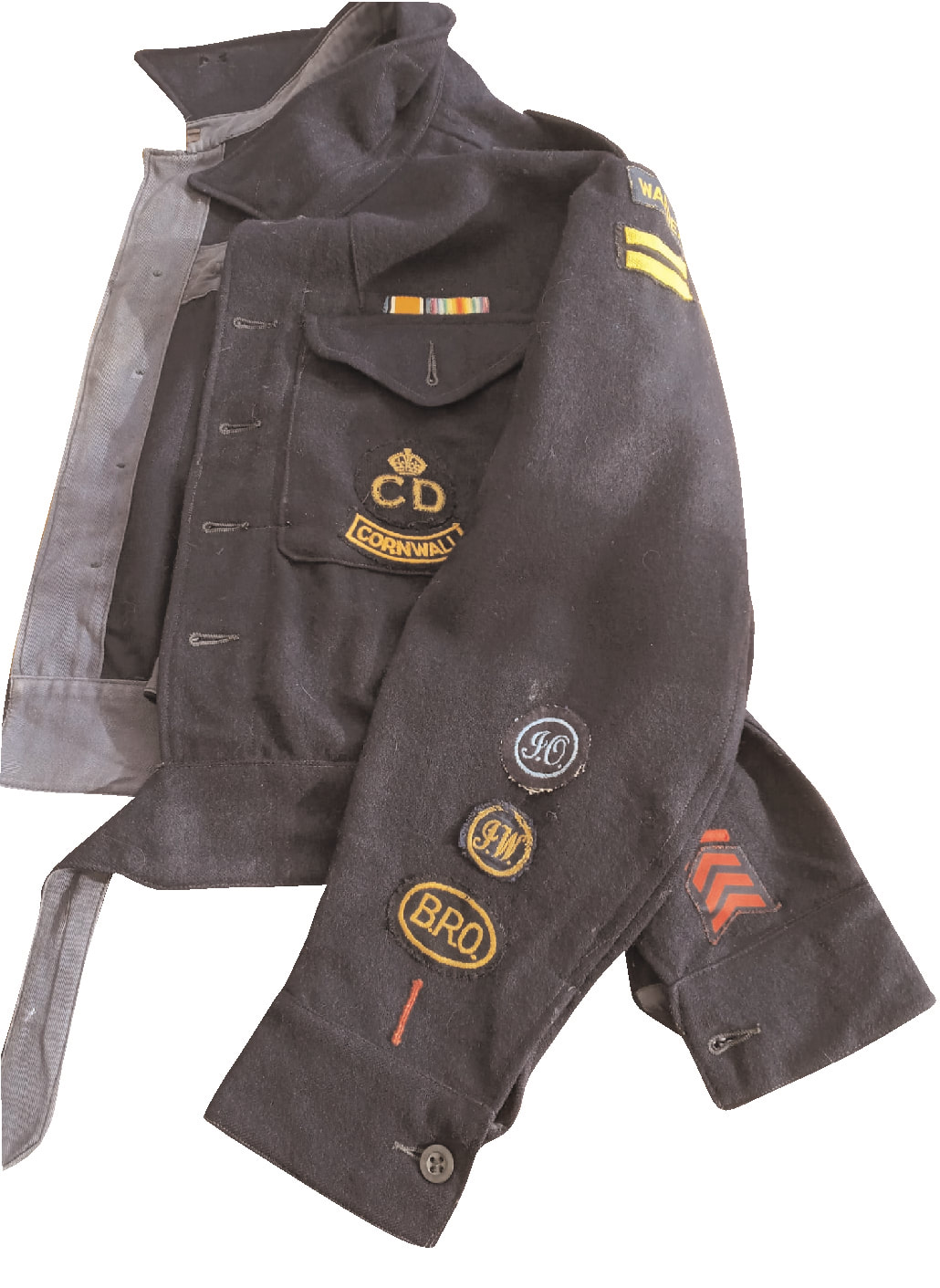
 RSS Feed
RSS Feed